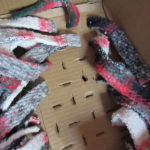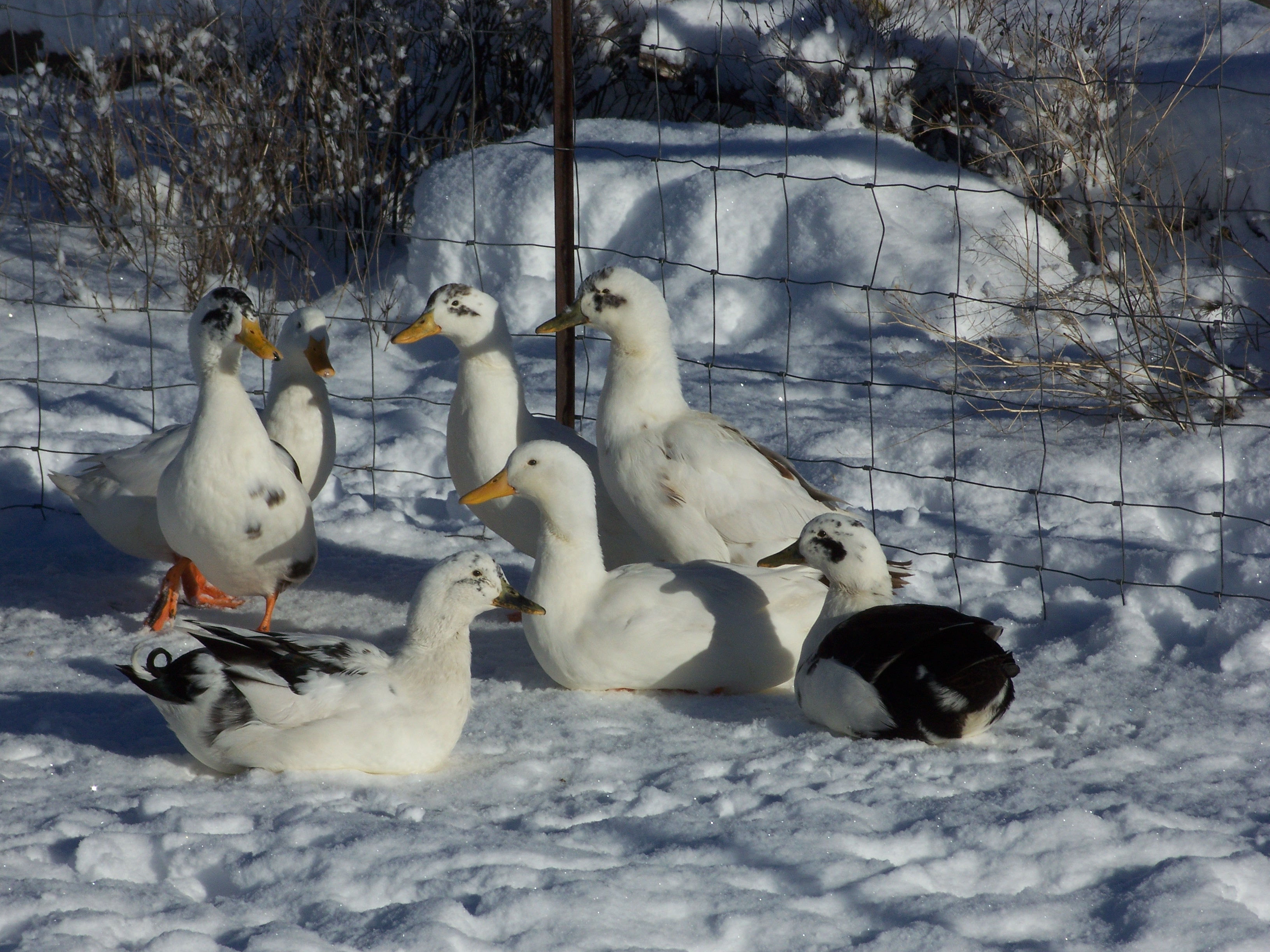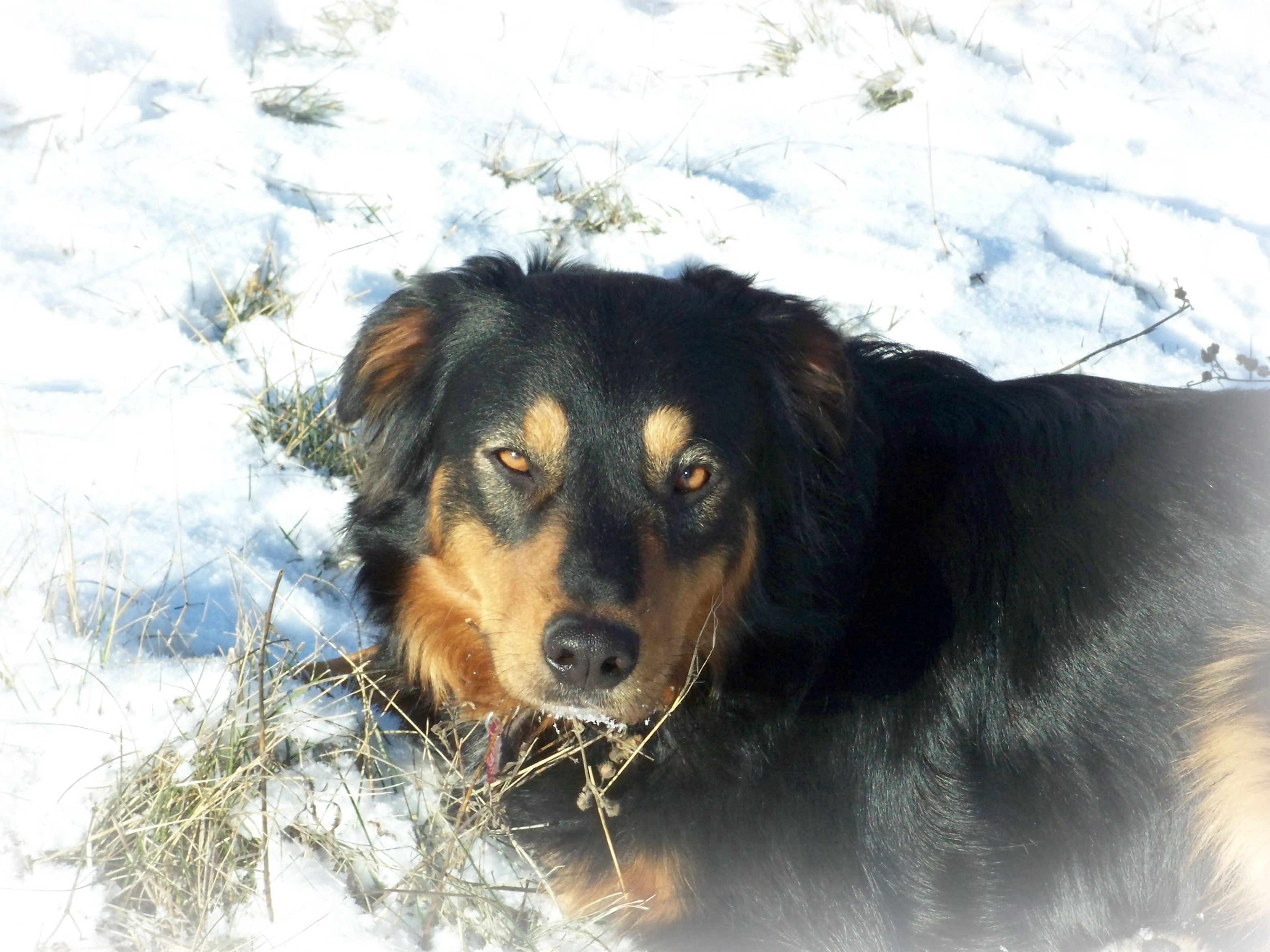In 2021, we needed to start a new laying flock. Living off-grid with only a small amount of solar power, we needed to learn how to brood chicks with very little- or preferably zero- electricity.
We saw kerosene set-ups to provide heat. In pondering over it though, for one thing, Krystal is highly sensitive to its odor. Also, a bird’s entire body is their respiratory system so it didn’t seem to be the healthiest option- think canary in a coal mine.
Then we saw something called a brooding or warming plate that uses very low wattage. Initially, we decided to use one of these, but then the battery bank for our solar power system failed. Back to square one.
Cold Brooding
Years ago, Krystal had heard about a method called “cold brooding.” Research and a lot of thought needed to go into this venture in order to have a positive outcome and one that we could document to share with other off-grid folks. Doing online research was Krystal’s winter project, although there was little to be found.
What we did learn is that cold brooding is actually an ancient method, apparently going back to Roman times. Well, it would have to be old since electricity is a relatively new invention! Historically, cold brooding has been successful even in cold winter/spring climates like ours.
Cold brooding involves trapping the chick’s own body heat with a low-height box often made of straw bales. In recent years, people have added to this by using what is affectionately referred to as a “Mother Hen box.” And YouTubers gave us the idea to use hot water bottles.
So, the decision was made. We would raise our new chicks using with:
- Cold brooder of straw bales
- Mother Hen box
- Hot water bottles
Mother Hen Box
There are two types of Mother Hen box: a sturdy cardboard box with fabric strips and bedding material like pine shavings or straw; or a wire form (sometimes within a box) insulated with straw. We chose the cardboard version because that is what we had at hand.
The dimensions of the Mother Hen box need to be based on the number of chicks. In other words, you need a larger box for more chicks or a smaller one for fewer. However, it is not recommended to cold brood fewer than 10 chicks. For thirty chicks, our box was 16”x 16” and cut down to 8” H. This seemed to be just right. Two-quart hot water bottles fit inside while the chicks were young.
The Mother Hen box is to be adjustable in height- this is easiest if the top and bottom of the box slip fit into each other- ours could be raised to 15” H. Holes on either side for wood dowels to support the lid as it gets raised are helpful, as this forum post shows.
When the chicks are very young, the Mother Hen box should be a maximum of twice their height in order to keep their body heat close to them. Although we did not think to do this initially, in the future we will add pieces to the interior corners of the box for a rounded effect.
It also needs a small entry door, a few ventilation holes, fabric strips that hang down inside the box for the chicks to nestle amongst like the feathers of a hen, and bedding material.
Using thick polyester fleece fabric we already had, sections were cut about 1 inch longer than the box at full height. Then those sections were cut into strips from 1 to 1 ½ inches wide. We cut a lot so as not to run out!
Slits were made in the lid of the Mother Hen box with a large kitchen knife and the fabric strips were inserted. Krystal experimented and finally chose to alternate the direction of the slits. Make sure the strips don’t lie directly on the bedding; you want the chicks to easily move through and around them, not defecate on them.
The bedding material was added; the lid with strips was slid onto the bottom, and it was ready for chicks!
On a side note, we let a few of the long fabric strips that were piled on top of the box drape over the entry door and exposed sides. We noticed that during the day, the chicks would often snuggle up behind them. Read an interesting observation on this later.
Note: it is not advised to use cedar shavings as bedding since they are known to cause eye and respiratory irritation to animals.
The Brooder Box
With the Mother Hen box complete, it was then placed inside a large brooder box. Again, we looked at what was on hand and used the 2’x3’ whelping box for our Havanese puppies. We put plastic on the floor and then a cushy layer of coarse pine shavings.
The outdoor brooder box we would eventually move the chicks to was formed using four straw bales we already had on hand for our sheep and goats.
Hot Water Bottles
We went one step farther with our cold brooding system and borrowed an idea from off-grid folks on YouTube- that of putting very hot water into bottles for radiant heat to keep the ambient air temp warmer and for the chicks to snuggle up to. They worked like a charm!
We rotated four quart-sized HDPE plastic bottles with screw-on lids that did not leak. Using two at a time inside the Mother Hen box, the temperature was maintained from 79-90°F (26 to 32°C). To accomplish this, the water was heated to anywhere between 130 and 145°F (54 to 62.7°C) and the bottles were replaced in the morning upon waking and also at bedtime.
The First Two Weeks
With hatcheries selling out of chicks very early in the season again in 2021, we placed our order in January. Wanting to brood them in the henhouse- instead of our 12’x12’ tiny cabin- we requested that our chicks arrive no sooner than mid-March. On March 20th, we collected 30, 3-day old chicks from the post office!
Overnight low temperatures of 18-33F (-7.7 to 0.5C) were too cool for our comfort so we opted to keep the chicks in the cabin for the first two weeks, to get them past the really tender age. Yep, we chickened out… to an extent! But as mentioned before, we wanted this to be a successful experiment not only for ourselves but to share with others. Our research showed people who use cold brooding do so when low temperatures are around 57F/14C. We could have waited to get our chicks at a later date, but we really wanted pullets to start laying this year.
Even though the chicks were in the cabin from 3 days old to 17 days old, zero electricity was used because we heat solely with wood. We did use propane to heat water for the bottles. The indoor temperature range with only a small fire in the morning was from 60-79F (15.5 to 26C), but as low as 58F/14C on the floor of the brooding box. Based on this, we feel it was a reliable test for these off-grid cold brooding techniques.
Having the chicks in the cabin was actually quite helpful in “training” them to use the Mother Hen box. All this involved was to place a chick just inside the door of the box if it seemed too cool so it learned the box was a warm place to go. It only took about a day and a half for their instincts to kick in, and they were scurrying in and out at will!
Being in the cabin also enabled us to easily monitor the brooder and Mother Hen box temperatures throughout the day and night using a digital thermometer that tracks highs and lows. The probe was pushed down through one of the slits in the Mother Hen box lid. This helped for documentation purposes as well.
To begin with, the temperature range in the Mother Hen box with two hot water bottles was anywhere from 88-95F (31 to 35C). As the chicks grew, they needed less and less of this radiant heat so we cut back to using one hot water bottle at night and finally none. We knew it was time when the temperature with the chicks inside with one bottle spiked to 100F/37.7C and all the chicks came out! After taking the bottle out and it had cooled down a bit, the chicks went back inside where the temperature stabilized to 88F/31C just from their own body heat.
During the day for the first week and a half, we also placed a hot water bottle in the main area of the brooder box so if they felt the need they could snuggle up to it. And they did, resting their little chin (do chickens have chins?), breast or side against it. Even hopping on top to warm their feet! Their main focus was to eat, drink, and scratch- not to go inside the dark warmth of the Mother Hen box. This makes sense since, when hen-raised, chicks mostly follow mommy around during the day foraging.
Soon, the chicks stopped using the hot water bottle in the main brooder area and would just nestle into the pine shavings so we discontinued using one there.
Like adult chickens do, as daylight grew dim the chicks would instinctually go into the dark warmth of the Mother Hen box to sleep. Once they were all inside and quiet, we covered the entire brooder box with a piece of dark fabric to block out light. This really helped them remain settled as we were moving about or watching movies until retiring to bed.
Moving Day
At seventeen days old, we moved the chicks to the henhouse where we had the straw bale brooder set up.
The bales were set on top of outdoor rigid foam insulation with a thick layer of pine shavings on top. The Mother Hen box was added. Plastic bird netting was placed over the brooder to keep the active chicks in, and critters like chipmunks and squirrels out. To further help with heat retention, we used another sheet of insulation as a lid over the brooder so that during the day it could be slid open for natural light.
Now, two digital thermometers were used- one with the probe attached to the underside of the brooder lid (hanging down about 3 inches), and the other probe inside the Mother Hen box as before.
Being that the temperatures were definitely going to be colder out there than in the cabin, we used the hot water bottles again but graduated up to two, one-gallon bottles at a time in the main brooder area. The water temperature was also increased to around 160F/71C. We chose not to put a bottle in the Mother Hen box for two reasons: 1) there wasn’t enough space in it anymore because the chicks had grown; 2) we knew their own body heat would keep them plenty warm inside it.
For their first night, we put the hot water bottles in at 10 p.m. The overnight low temperature was a chilly 31F/0C. Were we concerned? You bet, but again, we were pleasantly surprised by this system!
At 6 o’clock the next morning, we anxiously checked on the chicks. The digital thermometer in the brooder read 53F/11.6C. Upon sliding the lid back, we noticed that all the chicks were still in the Mother Hen box which was 88F/31C!
That is, except for one chick. For some reason, it had nestled itself down into the shavings between a straw bale and the Mother Hen box and, importantly, behind a few of the fabric strips that were hanging down… and its body was perfectly warm! Hearing our activity, soon all the chicks shuffled out from the Mother Hen box, happy as clams.
The previous nights’ hot water bottles were replaced, and the lid slid back into place. When the outdoor temperature reached 45F/7C, the lid was slid back leaving about an 8-inch gap and the henhouse access door facing east was left open for natural light.
Four hours later, the temperature inside the brooder was 67F/19C while outdoors it was 54F/12C. We checked on the chicks every two hours from then on.
In the early afternoon, a light wind with 10-15 mph gusts had stirred up. At 62F/16.6C in the brooder, the chicks seemed quite comfortable. When the brooder temperature fell to 53F/11.6C by late afternoon, the hot water bottles were replaced. Allowing the temperature to drop helped the chicks acclimate without them becoming too cool. The chicks knew what to do to keep warm- go inside the Mother Hen box or nestle into the shavings.
Weeks 2.3 Through 4
Things have gone without a hitch! A couple of nights the temperatures even dipped as low as 18F/-7.7C, so we put in three hot water bottles at bedtime and first thing in the morning. Yet the chicks were happy campers.
By 3 ½ weeks old, the chicks didn’t need the hot water bottles at all anymore, their own body heat was maintaining the nighttime brooder temperature between 50F/10C and 57F/13.8C.
Four to Six Weeks
At four weeks of age, we started leaving the brooder lid cracked open a few inches overnight, increasing the space every couple of nights. Low temperatures were 31-36F (-0 to 2C.)
At 4 ½ weeks old, we decided to take the Mother Hen box out since they were doing so well and mostly just camping out on top of it! Our thought also was to slowly get the chicks used to not having it for after their release from the straw bale brooder. The first morning, it was a frosty 29F/1.6C but the brooder was 51F/10.5C and the chicks were perfectly content.
Liberation!
At six weeks old, the chicks were well-feathered and so were liberated from their straw bale brooder. And, boy, were they ever flap happy, racing around the hen yard!
Interestingly, as I finish this article for the blog it has been two weeks and the chicks have yet to go back inside the henhouse at night. They choose to sleep underneath it with the lone duck- and this is with nighttime temperatures from 26 to 39F (-3 to 3.8C.) It would seem that cold brooding helped them to become quite hardy!
What We Learned
Our cold brooder system was a resounding success! Although most of the information we found said this method was too tricky to use with chicks under ten days old- and preferably no younger than three weeks old- we found that the young chicks did exceedingly well.
Make sure to open and check inside the Mother Hen box for any dead chicks. We did lose five Delaware in the first week. It might have happened anyway, but our thoughts are that possibly the square interior shape was an issue. Next time we will make the inner corners rounded.
We never needed to increase the height of the Mother Hen box since chicks nestle down low to sleep. If you choose a large breed- like Brahma or Jersey Giants- you may need to adjust it.
The thick, loosely woven fabric we used for the strips in the Mother Hen box became problematic. The chicks began to pick it apart and attempt to swallow the long fibers, which resulted in those strands becoming stuck in the crop of two chicks. After cutting the fiber, the strand was regurgitated. Thankfully, we didn’t lose any chicks because of this problem.
As for the foam board, while it did just what we wanted it to do, the chicks pecked at it mercilessly! Obviously, eating tiny bits of it is not good. Next time we will place a piece of plywood on top of it to prevent this.
In our initial research, one blog writer said she always chooses fast-feathering breeds like Leghorns to cold brood. That is a desirable trait no matter what brooding method is used. We chose two heritage breeds known for this trait- Delaware and Australorp (with a couple of Easter Eggers for fun, although they are not noted for fast-feathering.)
Our local feed mill owner, a poultry grower himself, suggested that for laying flock chicks we go straight to giving grower feed instead of chick starter. Quite probably the nutrient difference also helped our three-day-old chicks succeed in a cold brooder system.
Deep Thoughts
What a wonderful surprise to also learn how well the cold brooding method harmonizes with our Natural Rearing principles, and even those of animal naturopathy! In fact, even if we had plenty of electricity at our disposal, we would still choose to brood chicks this way. We had many deep thought moments!
For instance, are historically broody breeds less so nowadays because they are not raised by a hen? Could this Mother Hen box awaken that instinct in them? We will find out!
Could the 24/7 bright artificial lights used to brood chicks in the modern way also adversely affect them? Constant light is torturous to humans and completely throws off their circadian rhythm. We observed that, just like adult chickens, as evening came on the chicks instinctively went into their Mother Hen box to sleep for the whole night. And when the cabin started getting light in the morning, they woke and came out of the box. Does constant light prevent them from getting adequate rest? Again, we all know what that does to humans. We had zero issues (yes, zero!) with the chicks pecking at each other even though the straw bales offered far less than the recommended brooder space. They were active yet calm and friendly, uttering soft whistling-type sounds.
We hope that documenting and sharing our experience of cold brooding chicks with zero electricity will give you the confidence to try it, too. If you do, let us know! And if have any questions along the way, please feel free to email us.










Interesting article, Krystal! I’ve never heard of this, but would love to try it some time, and all the detail you provided will undoubtedly be helpful.
[…] zero electricity. Instead, we used a cold brooder and a Mother Hen box (you can read that blog post here). It has yielded some interesting anecdotal results, most […]